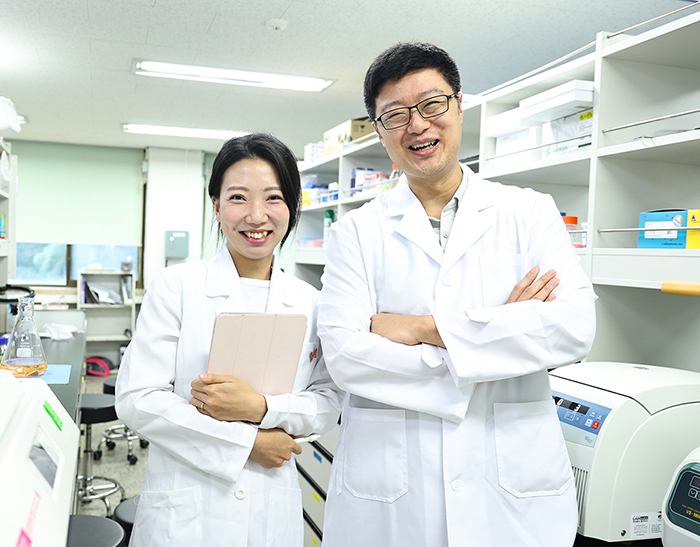Development of a new cancer treatment that mimics E. coli by research team of Department of Biomedical Engineering N
No.2756888- Writer PR team
- Date : 2022.06.02 14:18
- Publication Date : 2022.05.26
- Views : 6171
Development of “E. coli-mimicking photothermal/immune complex cancer drug” using gold nanorods
Suggestion of a new concept treatment method that blocks metastasis and recurrence through selective cancer treatment
Published in <ACS Nano>, the world's most authoritative journal in the field of nano-science
[May 26, 2022]

<Research team of YU Department of Biomedical Engineering (From left, Researcher HWANG Joo-young and Professor JIN Jun-oh>
The research team of Professor JIN Jun-oh of YU Department of Biomedical Engineering developed a new type of cancer treatment that mimics E. coli. Especially, the YU research team is drawing attention from academic societies by suggesting a new concept treatment method that can block metastasis and recurrence of cancer through primary cancer treatment.
More than 90% of cancer patients die due to recurrence and metastasis. Local treatments such as surgery, chemical treatment, and photothermal therapy are used to treat cancer but hidden cancer cells frequently recur after months or years after treatment or metastasize through blood vessels to cause cancer in other tissues.
As an alternative to the method to lead cancer cells to dead with activation of human immune cells, “Immune cancer treatment” is drawing a lot of attention recently. Immunotherapy is a cancer treatment that can selectively kill cancer cells without side effects by inducing specific immune activity against cancer antigens.
YU research team manufactured “E. coli mimetic gold nanorod (ECA)” by coating FimH, an E. coli adhesion protein having immune activation ability, on gold nanorods used for photothermal therapy. The research team selectively killed only tumor cells with administration of ECA and irradiation of a laser on the tumor site. In this process, it was found that cancer antigen-specific immune activity was induced by cancer antigen released during cancer cell death and by FimH, an immune activator released from ECA, resulting in complete block of metastasis and growth of recurrent cancer completely.
The research team said, “Endeavors were focused on inducing antigen-specific immune activity using cancer antigens and immune enhancers to overcome the limit of immune cancer treatment. Especially, in order to overcome the difficulty of finding effective antigens caused by diversity of cancer, photothermal treatment of the primary cancer was used to induce antigen expression in the cancer cells itself, and at the same time, a structure was designed to secrete immune enhancers.”
Professor JIN Jun-oh showed his plan for follow-up studies saying, “In this research, we developed a photothermal immunotherapeutic agent that contains both a photothermal agent for photothermal treatment and an immune activator that can activate immune cells in the body with E. coli-mimicking gold nanorods. This photothermal immunotherapeutic agent should be applied to cancers that can be treated with photothermal treatment such as melanoma and breast cancer, in order to completely block metastasis and recurrence of cancer through primary cancer treatment. We will develop a photothermal immunotherapeutic agent to be used for various kinds of cancers and will develop nanomaterials to treat primary cancer and prevent metastatic and recurrent cancers at the same time.”
This research was conducted as a support project for Excellent New Researcher Project by National Research Foundation of Korea with participation of Researcher HWANG Joo-young (Ph.D. completion) of YU Department of Biomedical Engineering as lead author and Professor JIN Jun-oh as corresponding author. The result of this research was published on April 25th in the online version of <ACS Nano> (IF 15.880), a world-class journal in the field of nanoscience.